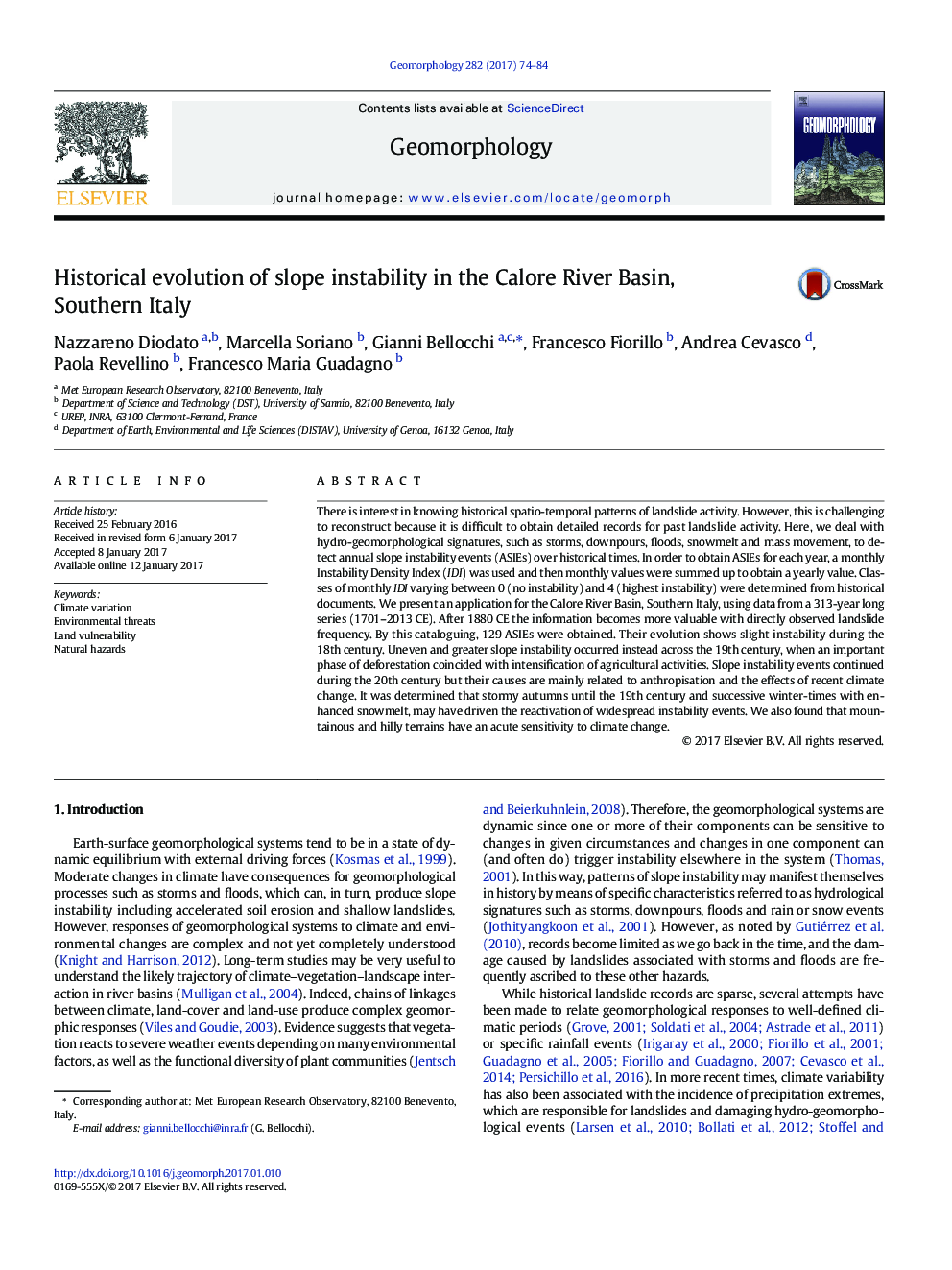| کد مقاله | کد نشریه | سال انتشار | مقاله انگلیسی | نسخه تمام متن |
|---|---|---|---|---|
| 5781119 | 1635367 | 2017 | 11 صفحه PDF | دانلود رایگان |
- We studied rainfall extremes responsible for landslides.
- We used past written sources and observations to derive an index of land instability.
- We estimated 129 annual instability events between 1701 and 2013 in an Italian basin.
- We showed continuing instability during the 20th century.
- We related recent instability to anthropisation and climate change.
There is interest in knowing historical spatio-temporal patterns of landslide activity. However, this is challenging to reconstruct because it is difficult to obtain detailed records for past landslide activity. Here, we deal with hydro-geomorphological signatures, such as storms, downpours, floods, snowmelt and mass movement, to detect annual slope instability events (ASIEs) over historical times. In order to obtain ASIEs for each year, a monthly Instability Density Index (IDI) was used and then monthly values were summed up to obtain a yearly value. Classes of monthly IDI varying between 0 (no instability) and 4 (highest instability) were determined from historical documents. We present an application for the Calore River Basin, Southern Italy, using data from a 313-year long series (1701-2013 CE). After 1880 CE the information becomes more valuable with directly observed landslide frequency. By this cataloguing, 129 ASIEs were obtained. Their evolution shows slight instability during the 18th century. Uneven and greater slope instability occurred instead across the 19th century, when an important phase of deforestation coincided with intensification of agricultural activities. Slope instability events continued during the 20th century but their causes are mainly related to anthropisation and the effects of recent climate change. It was determined that stormy autumns until the 19th century and successive winter-times with enhanced snowmelt, may have driven the reactivation of widespread instability events. We also found that mountainous and hilly terrains have an acute sensitivity to climate change.
Journal: Geomorphology - Volume 282, 1 April 2017, Pages 74-84
